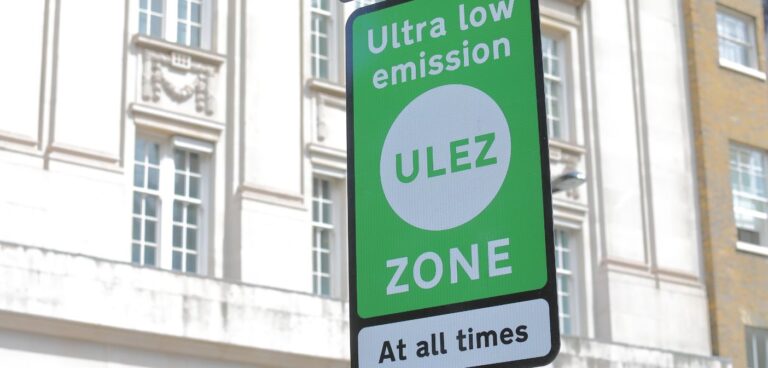Last year’s expansion of London’s Ultra Low Emission Zone (ULEZ) has failed to significantly reduce the amount of emissions from vehicles across the UK capital, according to a report from Transport for London (TfL),
In October 2021, the ULEZ was increased to cover most of central London to cover the areas between the North and South Circular roads.
However, the report revealed that there has been no change in the levels of pollutants since the update to the zone.
The ULEZ was launched in 2019 to help improve air quality in the heart of the city by discouraging the most polluting vehicles through a levy system.
All cars, motorcycles, and vans (up to and including 3.5 tonnes) that don’t meet the minimum emissions standards must pay a £12.50 daily charge.
Following the increase in the size of the zone, the daily charge has expanded to cover an area 18 times the size of the original zone and home to 3.8 million people.
Read more: Concerns raised about ULEZ expansion amid cost of living crisis
Despite the findings, London Mayor Sadiq Khan said: “I’m proud of the progress we have made in making our city’s air cleaner for millions of Londoners.
“We must now capitalise on this success, which is why I’m consulting on expanding the ULEZ London-wide to extend the benefits of clean air to all Londoners.”
Khan revealed that TfL figures showed that around 124,000 vehicles driven within the extended ULEZ zone before October were not compliant with regulations, but by the end of June 2022, it had decreased to fewer than 67,000 vehicles.
The report also stated that more compliant vehicles were travelling within the extended zone compared to October 2021 – rising from 85% to 94%.
The total number of vehicles on London’s roads had also decreased by just over 2% since the changes to the ULEZ last year.
What’s more, the report showed that there has been a 20% decrease in the number of diesel vehicles used since October and ownership has dropped by 25% year-on-year.
However, the report also showed that, since the October extension, the amount of nitrogen dioxide in the extended zone was still 21% lower than target.
The data suggests that while the implantation and compliance of the ULEZ has been a success, it hasn’t had the desired impact that many thought it would.
However, the report noted that it is important to consider other factors that could have impacted this over the past few years.
With the third and final lockdown happening last year, the cost of living crisis, fuel shortages, price of petrol and diesel, and the weather all having an impact on the statistics, TfL said it was “difficult to definitely attribute changes to emission and concentrations to the impacts of ULEZ”.





